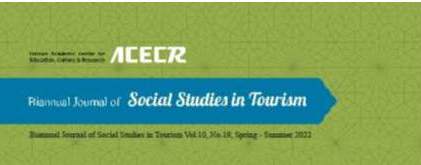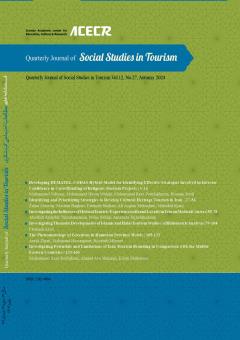-
-
List of Articles
-
Open Access Article
1 - Developing DEMATEL-CODAS Hybrid Model for Identifying Effective Strategies Involved in Investor Confidence in Crowdfunding of Religious Tourism Projects
Mohammad yahyaei Mohammad Hasan Maleki mohammad Reza pourfakharan Hossein izadi -
Open Access Article
2 - Identifying and Prioritizing Strategies to Develop Cultural Heritage Tourism in Iran
Zahra Moaven Moslem Bagheri ّFatemeh Shekari Ali Asghar Mobasheri Mehrdad Kiani -
Open Access Article
3 - Investigating the Influence of Medical Tourists’ Experience on Brand Loyalty in Tehran Medical Centers
Abolfazl Tajzadehnamin Mona Salimi amirreza tajzadeh namin -
Open Access Article
4 - Investigating Thematic Developments of Islamic and Halal Tourism Studies: a Bibliometric Analysis
Fatemeh Azizi -
Open Access Article
5 - Phenomenology of Greenism in Hamedan Province Hotels
Arash Zinati Mahmoud Hassan Pour Roozbeh Mirzaei -
Open Access Article
6 - Investigating Potentials and Limitations of Iran Tourism Branding in Comparison with the Middle Eastern Countries
Mohammadreza Rozbahany Ahmad Abu Hamzah kiyan shakarami
-
The rights to this website are owned by the Raimag Press Management System.
Copyright © 2017-2025







